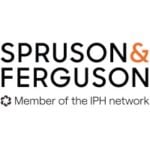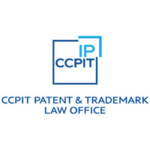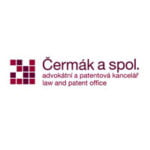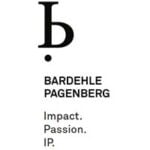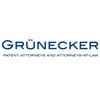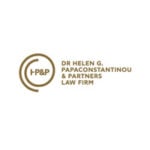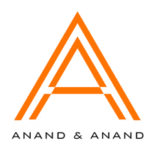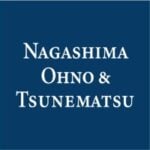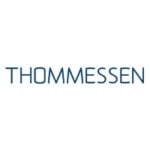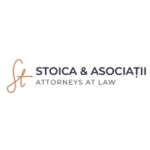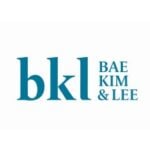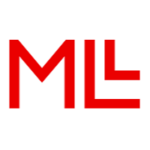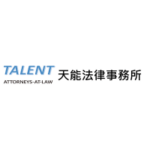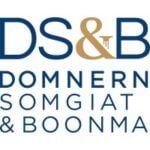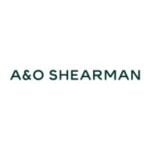-
What is the forum for the conduct of patent litigation?
As of July 2020, so-called specialised IP courts have been in operation in Poland. Actions for the infringement of intellectual property rights are generally brought in the first instance before the specialised IP divisions of five Polish Regional Courts located in Warsaw, Poznań, Gdańsk, Lublin, and Katowice. In turn, appeals are heard before the Courts of Appeal located in Warsaw and Poznań.
With respect to patent litigation, exclusive jurisdiction is reserved for the Regional Court in Warsaw, i.e. the XXII Intellectual Property Division in the first instance while appeals are brought before and heard by the Court of Appeal in Warsaw, i.e. the VII Commercial and Intellectual Property Division.
Judgments of the Court of Appeal are binding and enforceable but can be challenged by way of extraordinary means of appeal, i.e. a cassation complaint being a special appeal on any errors of law or procedure to the Supreme Court.
-
What is the typical timeline and form of first instance patent litigation proceedings?
Patent litigation proceedings last approx. 1-2 years in the first instance and approx. 1-1.5 years in the second instance. The timeline of proceedings before the first instance is dependent on a number of factors including, i.a.:
- the type of invention patented and the technical field involved;
- the types of claims brought by the patentee;
- the number of experts to be appointed by the court as well as the scope and type of means of evidence the patentee presents;
- other procedural means which the patentee may use, e.g. a request to disclose information or to disclose of the means of evidence;
- the defendant’s possible request in administrative proceedings to invalidate the patent being litigated and the impact of such invalidity proceedings on the patent infringement case; and
- the defendant’s overall defense strategy.
The Polish patent system is bifurcated. Actions concerning the validity of patents are decided by the Patent Office of the Republic of Poland (“PPO”) in administrative proceedings. Decisions of the PPO can be appealed to the administrative courts.
The differences in procedure applicable to patent disputes are mainly limited to:
- such cases being heard by the specialised IP courts;
- the obligatory representation of professional lawyers; and
- allowing for some IP-specific procedural tools which include motions to disclose information or the means of evidence as well as motions to secure evidence.
Otherwise, a patent litigation proceeds under general procedural rules envisaged for civil or commercial disputes by the Code of Civil Procedure dated 17 November 1964 (“CPC”).
There is no separate procedure to interpret patent claims. In infringement proceedings, the scope of patent protection arising from an independent patent claim is vested with the court and the parties are allowed to present their position on this. The claims are also interpreted by the expert as a necessary element of opining on the technical features of the patented invention and the allegedly infringing goods. This aspect constitutes one of the key merit elements of a patent infringement dispute.
-
Can interim and final decisions in patent cases be appealed?
Yes, both interim and final decisions in patent cases can be appealed.
Final decisions (judgments)
Both the claimant and defendant can file an appeal against a first-instance judgment within the scope unfavourable to the party concerned. An appeal to the Court of Appeal in Warsaw is filed through the court that issued the judgment in the first instance (here, the Regional Court in Warsaw) within two weeks from the date of the delivery of the judgment with the written reasoning to the party. The first-instance court prepares the written reasoning of its judgment upon the party’s request that must be filed within one week from the date of the announcement of the judgment.
Under the CPC, courts of appeal in Poland review both factual and legal issues and re-examine the case anew. Courts of appeal are not bound by the allegations of a violation by the first-instance court of substantive law as set out in the appeal. However, the court of appeals is bound by the allegations of a violation of procedural laws. The appeal is decided both on paper (a written appeal and the reply to an appeal) and the parties’ arguments presented during a court hearing. A court of appeal may examine the case at a closed sitting (in camera) if it is not necessary to conduct a hearing unless any of the parties applied for a hearing.
There is an extraordinary measure against a final and binding judgment of a court of appeals, i.e. a cassation complaint to the Supreme Court. However, the prerequisites allowing such a cassation complaint to be filed are narrow and are interpreted strictly.
First-instance judgments are generally not enforceable until they become final and binding. Only in certain specific cases set out in the CPC must or may a court declare a judgment to be immediately enforceable despite a judgment not yet being final and binding.
Interim decisions
It is also possible to appeal against different types of decisions issued by the court throughout the first-instance proceedings which are not final judgments on the merits. In patent infringement cases, this pertains, in particular, to the court’s:
- interim injunction decisions; and
- decisions concerning securing or disclosing the means of evidence and the decision on information disclosure.
In all these cases, a separate procedural measure is applied, i.e. a complaint against the court’s decision.
A deadline to file a complaint against the first-instance decision is one week from the date of the service of the decision together with reasoning. If the court refrained from preparing a statement of reasons when issuing a decision, the time limit starts to run from the date of the decision’s announcement, and where it is subject to service, from the date of its service. Moreover, a right to file a complaint against the court’s decision depends, in principle, on whether the party has effectively requested the service of the decision with reasoning.
Complaints against interim injunctions and decisions concerning securing or disclosing the means of evidence and the decision on information disclosure in patent cases are examined by the Court of Appeal in Warsaw.
The interim decisions referred to above are enforceable despite not being final and binding pending appeal (complaint). The enforceability of first-instance decisions can be stayed by the court in certain cases.
If there are court decisions which cannot be challenged by means of a separate formal complaint, the party can still question the decision in their appeal against a first-instance judgment if such court’s decisions had an impact on the merit assessment of the case.
-
Which acts constitute direct patent infringement?
A direct patent infringement occurs if any of the below actions is taken in the course of trade (or professionally) within the territory of Poland:
- making, using, offering, marketing, storing, or warehousing products being the subject of the invention, exporting or importing them for these purposes; or
- applying the process that is the subject of the invention and using, offering, marketing, storing, or warehousing products obtained directly from that process, and exporting or importing them for these purposes.
-
Do the concepts of indirect patent infringement or contributory infringement exist? If, so what are the elements of such forms of infringement?
Polish patent law does not expressly provide for the concept of an indirect (or contributory) patent infringement. At the same time, the scope of patent protection is determined by patent claims while the invention description and drawings may be used to interpret such claims. Consequently, to prove an infringement, a claimant should, in principle, and subject to the doctrine of equivalents discussed separately below, demonstrate the occurrence of prerequisites listed in point 4 above.
Case Law, Doctrine, and Practice
As this approach is quite formalistic and, in some cases, it may not provide a sufficient scope of patent protection, there is some case law and doctrine in Poland that allows protection to also be granted in “indirect infringement” cases. Such cases may potentially include a scenario where:
- two or more entities, acting in agreement, implement all the technical features of a patent claim; or
- a third party manufactures an essential element (part) of a protected invention for its subsequent use to assemble a final protected product by another entity.
General Civil Law Rule of Third-Party Liability
Irrespectively, there are also court rulings allowing financial claims to be brought for patent (or other IP rights) infringements under general civil law rules which allow such claims against a party which did not cause damage itself but, for example, assisted an infringer or benefited from the damage caused by an infringer.
No Uniform Approach or Practice
There is no settled case law in such scenarios and, due to the lack of explicit laws allowing indirect infringement, court decisions have differed on this issue.
-
How is the scope of protection of patent claims construed?
Under the IPL, the scope of patent protection is determined by patent claims set out in the patent specification, while the description and drawings may be used to interpret such claims. It is outlined in doctrine and practice that the scope of patent protection cannot be extended to include those elements set out in the description and drawings which are not reflected in patent claims. This literal interpretation of a patent claim and scope of patent protection is a principle the court applies in cases where the wording of a patent claim is clear and leaves no ambiguities in its interpretation.
Equivalents
Unlike in Article 2 of the Protocol on the Interpretation of Article 69 of the European Patent Convention, the IPL does not address the issue of the admissibility of the courts applying the doctrine of equivalents. This important patent protection aspect has been discussed broadly by Polish patent jurisprudence and doctrine has already been applied by Polish courts in patent infringement cases, including by the Supreme Court, although not in many cases to date.
Prosecution History
Although it is not a rule, the court may take prosecution history into account as an auxiliary measure while determining the scope of protection.
-
What are the key defences to patent infringement?
Defendants may bring a broad range of defences against infringement claims, both on the grounds of procedure and on the merits, for example:
- the patent owner failing to prove the occurrence in a questioned product or the method of technical features set out in an independent patent claim;
- claims becoming time-barred;
- the abuse of a patent;
- the exhaustion of a right;
- prior use; and
- a patent invalidity action to the PPO (a chance to stay court proceedings).
-
What are the key grounds of patent invalidity?
Under the IPL, a patent may be cancelled (invalidated) by the PPO upon a third-party motion if at least one of the following circumstances is proven:
- the conditions required to obtain a patent have not been met (in particular, novelty and inventive step);
- the invention has not been presented clearly or comprehensively enough for a person skilled in the art to implement the invention;
- the patent has been granted for an invention not covered by the content of the application or the original application; or
- the patent claims do not define the subject of the protection sought in a clear and concise manner or are not fully supported by the description of the invention.
-
How is prior art considered in the context of an invalidity action?
Under the IPL, prior art comprises all matters that have been made available to the public by written or oral description at any time before the priority date by use, exhibition, or disclosure in any other manner. Prior art also includes information contained in applications for inventions or utility models using earlier priority, not made available to the general public, if they are published in the manner specified in the IPL.
Prior art rules pertain generally to the assessment of a novelty prerequisite. The following examples can be shown in this respect:
- the disclosure of a patent in an advertisement if it shows the features of the invention making it predictable;
- the disclosure by publication in mass media (the Internet, social media, etc.);
- exposure at a fair trade – it is stated that even if no person became acquainted with the invention, the sole exposition destroys novelty.
-
Can a patentee seek to amend a patent that is in the midst of patent litigation?
Due to the IPL amendment in 2020, patent owners are allowed to file a motion with the PPO to limit a patent by amending the patent claim. After examining the filed motion, the PPO issues a decision to limit a patent, to refuse to limit, or to discontinue proceedings.
Such a limitation motion may also be filed by the patent owner during:
- the opposition proceedings, i.e. before commenting on the opposition; or
- patent revocation (invalidation) proceedings, i.e. before the hearing.
In such cases, the opposition/invalidation proceedings may be combined with the examination of the patent limitation motion. However, at the request of an opposing party / revocation applicant or a patentee, the PPO has to combine both proceedings which is further handled jointly. In such case, the opposing party / revocation applicant can oppose any such amendment applications made by the patent owner or the scope of the requested amendments. Given that the patent limitation (if accepted by the PPO) has a retroactive (ex tunc) effect, the outcome of such a limitation may impact both:
- the PPO’s assessment of the opposition or patent revocation request; and
- a pending patent infringement case.
-
Is some form of patent term extension available?
Patent protection lasts 20 years as of the date of filing the invention before the PPO. Following the lapse of the term of a patent, a monopoly arising from a disclosed and patented technical solution ceases to exist and it can be freely used by third parties.
In practice, in many cases, a technology is protected both by patents and by trade secrets (confidential know-how) simultaneously covering vital parts of the technology not disclosed in the patent prosecution process. Consequently, as long as the confidentiality of such technical or technological know-how is observed, the technology remains partially protected.
Irrespectively, with respect to medicinal products and plant protection products, the following EU regulations setting out the mechanism of supplementary protection certificates apply directly in Poland:
- Regulation (EC) No 469/2009 of the European Parliament and of the Council of 6 May 2009 concerning the supplementary protection certificate for medicinal products, amended by the Regulation 2019/33 which entered into force on 1 July, 2019; and
- Regulation (EC) No 1610/96 of the European Parliament and of the Council of 23 July 1996 concerning the creation of a supplementary protection certificate for plant protection products.
The new rules introduced in 2019 the manufacturing waiver in relation to SPC concerning medicinal products. Based on the manufacturing waiver generic medicines may be produced before the protection expires for stockpiling and export of such generic medicines outside the EU.
Within the scope of supplementary protection certificates, the IPL provides for some additional, mostly procedural rules.
-
How are technical matters considered in patent litigation proceedings?
Court-Appointed Experts
Given the technical aspect of disputes over patent infringement and that the Polish judicial system does not provide for technical judges (i.e. with technical education) in IP courts, opinions prepared by experts in patent infringement cases play a critical role in such proceedings. It is up to the court to appoint an expert after hearing both parties’ positions. The claimants usually apply to the court to appoint an expert in their statement of claims. Defendants may also apply for a court-appointed expert in reply to a statement of claim and may also comment and challenge the claimant’s proposals in this respect. The court-appointed expert’s role is not to determine the patent infringement (which is vested exclusively with the court) but rather to provide the judge with the necessary and objective technical information necessary to examine and decide on a case. Instead of individually appointed experts, the court may appoint a scientific institute as the opining body.
In the vast majority of cases, court-appointed experts prepare their opinion in writing. Also, in many cases, court-appointed experts are summoned by the court to clarify or supplement their initial opinion, either in writing or orally during the court hearing. Court-appointed experts need to be impartial and are subject to the same prerequisites of exclusion from a case as envisaged by the CPC for judges.
Private Experts
In many cases, claimants and defendants submit opinions prepared specifically for such litigating party by an expert which is not appointed by a court. However, such evidence offered by a litigating party may not substitute a court-appointed expert’s opinion and is considered as additional explanation of arguments of the party which submits such opinion to the court.
-
Is some form of discovery/disclosure and/or court-mandated evidence seizure/protection (e.g. saisie-contrefaçon) available, either before the commencement of or during patent litigation proceedings?
Three separate mechanisms exist to secure evidence and to disclose information which transpose the relevant measures set out under the IP Enforcement Directive 2004/48, i.e.:
- a motion to secure the means of evidence;
- a motion to hand over or disclose evidence; or
- a motion for information.
Motion to Secure the Means of Evidence
This motion can be filed by a patent owner against any person (including the defendant) who possesses the relevant evidence or who can enable such evidence to be secured.
Such a motion can be filed either:
- before commencing; or
- during the main proceedings until the case is closed in the first instance.
In the first scenario, a lawsuit must be filed within a specified court deadline. The deadline is between two weeks and one month as of the date the decision on securing the means of evidence becomes final.
This measure aims, in principle, at preventing a situation where achieving the purpose of the evidentiary part of the main proceedings would become impossible or be seriously hindered.
The court issues a decision on securing the means of evidence if the applicant shows the following two prerequisites:
- their claim is probable (corroborated); and
- they enjoy a “legal interest” in securing the means of evidence.
The CPC provides a specific definition of a legal interest in securing the means of evidence which explains and reflects the purpose of these proceedings.
The motion to secure the means of evidence should be examined by the court immediately at a closed-court sitting. The method of securing the means of evidence is shaped broadly in the CPC and can be freely determined by the court. Such methods may include, for example, the collection of goods, materials, tools used for production or distribution, documents, and the preparation of a detailed description of these items, combined, if necessary, with taking their samples. The court’s decision issued in the first instance is enforced by a court bailiff. This can be appealed to a court of appeal.
Motion to Hand Over or Disclose the Means of Evidence
This motion can be filed only against the defendant in the main proceedings. These proceedings aim to oblige the defendant to disclose or hand over the means of evidence being in the defendant’s possession, in particular, banking, financial, or commercial documents, to disclose and prove the facts.
To effectively request that the means of evidence be handed over or disclosed, the patent owner (claimant) must make probable the circumstances justifying the application, including the circumstances which show that the defendant indeed possesses the means of evidence requested. The defendant has the right to reply and comment on such a motion and the court may examine the motion and issue a decision, either at a closed sitting or during a court hearing. The court’s decision issued in the first instance is enforceable. It can be appealed to the court of appeals.
Motion for Information
This motion can be filed by the patent owner against any person (including the defendant) who possesses or has access to the relevant information.
Such a motion can be filed either before the main proceedings have commenced, or during the proceedings until the case is closed in the first instance. In the first scenario, a main infringement case must be initiated within a deadline not longer than one month as of the performance of the information disclosure decision by its addressee, i.e. the defendant or other person who was obliged to disclose information.
This motion for information can pertain to:
- the names and addresses of producers, manufacturers, distributors, suppliers, and other previous holders from or for whom goods were purchased or sold, services were used or provided, as well as expected wholesalers and retailers of these goods or services;
- information on the quantity of produced, manufactured, shipped, received, or ordered goods or services rendered, as well as prices received; and
- other information necessary to prove the amount of the claim in particularly justified circumstances.
The applicant must:
- show the probability of the circumstances showing the infringement;
- set out the scope of information sought;
- demonstrate why the addressee has the requested information; and
- show that the information is needed to establish the source or value of the infringement.
The addressee of the request may respond to the motion within the time set by the court, but this may not be shorter than two weeks. The court’s decision issued in the first instance is enforceable. It can be appealed to the court of appeals. The obligation to provide information is performed by the addressee (obliged party) in writing or in an electronic form.
-
Are there procedures available which would assist a patentee to determine infringement of a process patent?
The IPL provides for a broadened scope of protection for process patents so that a patent for an invention pertaining to a manufacturing method also covers products obtained directly by this method. There is a legal presumption of infringement concerning products manufactured with the use of the patented method if:
- they are new products; or
- the patentee proves that they were unable to establish, despite appropriate efforts, the actual method of manufacturing a product used by a third party.
In such cases, it is presumed that a questioned product which can be obtained by the patented method was manufactured in this way.
-
Are there established mechanisms to protect confidential information required to be disclosed/exchanged in the course of patent litigation (e.g. confidentiality clubs)?
The CPC provides some specific rules and mechanisms aimed at protecting confidential information during the course of the patent litigation. These rules include, i.a.:
- the court holding, at the request of a party, the whole or part of a hearing at a closed sitting (in camera) if facts constituting trade secret may be disclosed;
- confidentiality obligations being imposed on the mediator and mediating parties with respect to the facts disclosed throughout the mediation process; and
- certain specific rules in proceedings concerning the securing or disclosing of means of evidence or information disclosure which include:
(a) the court setting out some specific rules or restrictions concerning the use of disclosed means of evidence or disclosed information if trade secret arguments are brought by defendant; or
(b) examining appeals against first- instance decisions at a closed sitting within the scope that trade secrets aspects are involved.
-
Is there a system of post-grant opposition proceedings? If so, how does this system interact with the patent litigation system?
Post-grant opposition and invalidation motion
Any third party is authorised to file:
(i) an opposition against a final decision of the PPO to grant a patent within 6 months as of the date of the publication date of the information on the grant of such patent in the PPO’s Official Patent Gazette;
or
(ii) an invalidation (cancellation) action.
Both these legal measures are based on the allegation of a patent having been granted in breach of statutory requirements. Although there is no automatism and each case is examined separately, filing with the PPO an opposition or a motion for patent invalidation by the defendant may trigger the suspension (staying) of a patent infringement litigation. In such case, the patent litigation may be suspended until the opposition or patent invalidity case is finally decided.
-
To what extent are decisions from other fora/jurisdictions relevant or influential, and if so, are there any particularly influential fora/jurisdictions?
Polish law follows a continental model in which law arises from statutes, and courts only interpret these statutes. In practice, the jurisprudence of the CJEU, the Polish Supreme Court, and the common courts deciding on patent cases, i.e. the Regional Court of Warsaw and the Warsaw Court of Appeals, are considered to be of paramount importance in legal interpretation.
As outlined in point 16 above, patent opposition and invalidation proceedings before the PPO are relevant for the outcome of a patent infringement case pending before an IP court. In light of the principle of the territoriality of patents rights, outcomes in foreign proceedings may be taken into account by Polish courts; however, they will not be legally binding and may have only persuasive value.
-
How does a court determine whether it has jurisdiction to hear a patent action?
Polish IP courts will have jurisdiction to consider questions of the infringement of patents being effective in Poland, i.e. national patents granted by the PPO or European patents granted by the EPO and validated in Poland. Also, Polish IP courts may theoretically be competent to consider questions of infringement of a foreign patent if the defendant is an entity domiciled or seated in Poland under general jurisdiction/venue rules. In turn, Polish IP courts and the PPO do not have jurisdiction to examine and decide on validity in respect of foreign patents which are not effective in Poland.
Under the IPL and the CPC, an action to declare the non-infringement of a patent is possible. However, the impact of such declaratory proceedings on subsequent infringement litigation is unclear. In particular, there is still no settled case law concerning the co-relation between pending non-infringement proceedings and subsequent patent infringement litigation initiated between the same parties and under the same case background. The prevailing view here is that the latter proceedings should be stayed pending the non-infringement case. In any case, anti-suit injunctions as such are not envisaged in Polish patent regulations.
-
What are the options for alternative dispute resolution (ADR) in patent cases? Are they commonly used? Are there any mandatory ADR provisions in patent cases?
There is no alternative dispute resolution forum envisaged for settling disputes over patents. However, the parties may settle the case within mediation proceedings regulated by Polish procedural laws or during the hearing in the main case.
Parties may settle the case amicably at any point of the dispute; however, the amicable settlement entered into during later stages must take into account the events which previously occurred in the proceedings (e.g. the burden of costs already incurred earlier). An amicable settlement may be made before the court (at a court hearing, where the parties sign a settlement agreement that is placed on court files) or out of court.
A court may direct the parties to mediation but each of them has the option to disagree.
A settlement agreement made before the court, the withdrawal of a suit, or the admission of a claim are all controlled by the court which may refuse to consent to them if the court finds they are contrary to law, good morals, or aim to circumvent the law. This rarely happens.
-
What are the key procedural steps that must be satisfied before a patent action can be commenced? Are there any limitation periods for commencing an action?
Polish laws do not impose procedural steps which must be taken in order to allow the patentee to commence court action. It should be noted, however, that patent litigation may fall under the additional procedural regime of court proceedings in commercial matters. Under these specific procedural rules the court may impose costs of proceedings on the claimant who failed to summon the adverse party (defendant) to voluntarily settle the dispute, regardless of the final outcome of the litigation.
Claims concerning patent infringement are subject to statute of limitation periods set out in the IPL. Such claims become time-barred after 3 years. The limitation period begins on the day on which the patentee learned about the infringement of their right and about the person who infringed the patent, separately with respect to each infringement. In any event, the claims be time-barred 5 years from the date on which the patent infringement occurred.
With respect to interim injunctions, under the newly amended (July 2023) CPC, the court will dismiss a motion for interim injunction if it is filed more than 6 months after the day on which the claimant/applicant (patent holder) became aware of the infringement of its right.
-
Which parties have standing to bring a patent infringement action? Under which circumstances will a patent licensee have standing to bring an action?
Main Parties to Patent Infringement Proceedings
Patent infringement court proceedings are substantially conducted between a patent holder (claimant) and an alleged infringer.
Exclusive Licensees in Patent Infringement Proceedings
Polish patent law also allows exclusive licensees to seek patent protection in infringement proceedings, equally with a patent holder, if such exclusive licence is entered into the patent register and a licence agreement does not exclude the licensee’s right to seek patent protection. A patent holder initiating court proceedings does not preclude an exclusive licensee from bringing such claims against the same defendant and vice versa. Both parties may also jointly participate in court proceedings.
Non-exclusive Licensees
In turn, non-exclusive licensees may not bring patent infringement claims. Dependant on a specific patent background case, non-exclusive licensees may, however, be authorised to initiate claims against a third party based on unfair competition laws. The same applies to exclusive licensees who cannot demonstrate the joint prerequisites referred to above.
General Litigation Rules: Interventions
An entity which demonstrates a legal interest in a case being settled in favour of one of the parties (e.g. a patent holder or defendant) may, at any stage of the proceedings until the proceedings are closed in the second instance, join a party as a “side intervener”. They have similar procedural rights as a party proper; however, their actions cannot contradict the actions or statements of the party to whom an intervener has joined.
-
Who has standing to bring an invalidity action against a patent? Is any particular connection to the patentee or patent required?
Following an amendment to the IPL in 2020, any person can now apply to cancel a patent and the prerequisite of showing a “legal interest” in demanding the cancellation has been lifted.
-
Are interim injunctions available in patent litigation proceedings?
Grounds for an Interim Injunction
An interim injunction can be granted to secure a claim which the claimant made probable (prima facie likely), and further, if the grant of the interim injunction is necessary to ensure the future enforcement of judgment in the matter or to otherwise ensure that the aim of the proceedings is met. Such injunctions are only granted on the motion of a party.
Procedure
Interim injunctions may be granted ex parte where court’s immediate examination of a motion is required. Interim injunction motions are also examined ex parte in those cases where an injunction decision is to be enforced through a court bailiff. In other interim injunction cases the court allows the defendant to file a written response to the motion for an interim injunction and may schedule a court hearing.
Interim injunctions can be requested either before filing the statement of claim or during the main infringement proceedings.
In practice, interim injunction motions are examined by the IP courts within a couple of weeks as of the date of filing.
Interim injunction measures sought by the patentee
Usually patentees request the cessation of the allegedly infringing activity for the time of the main case (e.g. manufacturing, offering, sale) and the seizure of the allegedly infringing goods.
Cross-undertaking in respect of damages before granting an interim injunction
Under the CPC, the court can make the enforceability of an interim injunction decision conditional by the patentee submitting a security deposit to secure the claims of the defendant. In such case, the defendant will enjoy priority of satisfaction over other receivables immediately after the enforcement costs.
-
What final remedies, both monetary and non-monetary, are available for patent infringement? Of these, which are most commonly sought and which are typically ordered?
In the case of infringement, the patentee may demand the following remedies.
- prohibiting the defendant from taking infringing actions;
- recalling infringing products from the market, handing them over to the claimant, or their destruction;
- publication of the judgment (or a part of it) in the press;
- recovery by the defendant of unduly obtained profits; and
- in the case of faulty infringement, the payment of damages.
All remedies sought in a statement of claim, both financial and non-financial, must be determined specifically (in detail).
Additionally, a successful claimant is, in principle, entitled to the reimbursement of the cost of proceedings.
-
On what basis are damages for patent infringement calculated? Is it possible to obtain additional or exemplary damages? Can the successful party elect between different monetary remedies?
If the IP court determines that patent infringement is faulty, the patentee can request the payment of damages. The amount of such damages is calculated either under general principles of civil law (i.e. covering the actual loss and loss of profit), or alternatively, as an equivalent of a license fee or other remuneration which would have been due to the patentee if a consent to use (license) would have been granted. Under the CPC, if the court decides that proving the exact amount of damages is impossible, very difficult, or obviously pointless, it may award an appropriate sum in its judgment based on its assessment when considering all the circumstances of the case. However, this court competence is an exception from the general burden of proof rule.
-
How readily are final injunctions granted in patent litigation proceedings?
General Criteria Taken Into Account
The IP court should confirm infringement and grant final injunction in case the prerequisites referred to in point 4 above are met, i.e. when based on the evidence material gathered the court is able to confirm that a questioned product or process was indeed applied or exploited in the course of trade (or professionally) and such product or process meets all the technical features of a protected invention as set out in independent paten claim. The patent protection based on the equivalents theory has also been applied by Polish courts in patent infringement cases, including by the Supreme Court, although not in many cases to date. In turn, the approach to indirect patent infringement cases in Poland was outlined in point 5 above.
Prior User Rights
A person who was, in good faith, using the invention on the priority date or made all necessary preparations for such use on the priority date may continue to use it in their business after the patent was granted.
Patent Abuse
Assertion of rights under a patent is also subject to review from the perspective of legal provisions prohibiting the abuse of rights. Abuse of patent right may be found by the court e.g. where patentee aims at preventing the use of the invention by a third party, if it is necessary to meet the needs of the domestic market, especially when it is required by the public interest and the product is available to the public in an insufficient quantity or quality or at excessively high prices. In such circumstances, the court may refuse to enforce the claim.
Abuse of a Dominant Position on the Market
If rights under the patent are enforced in a way which exploits the patentee’s dominant market position, such enforcement is illegal and the court adjudicating on the patentee’s claim should dismiss it. However, such defence is rarely used, as proving the abuse of dominant position in a Polish civil court without the prior decision of the Polish Office for Protection of Competition and Consumer Protection is difficult.
Monetary Compensation In Lieu of the Injunction
Under the IPL, in case patent infringement is not faulty, the court may order the defendant, upon their request, to pay an appropriate amount to the claimant, if ordering cessation (prohibition) of infringement would be disproportionately severe for the infringing party, and the payment of such amount duly takes into account the interests of the rightholder. The IPL does not provide any specific rules of calculating such appropriate amount and the IP court decides on a case by case basis. While there is still no settled case law concerning the grounds and approach to such calculations, the doctrine postulates, among others, making by reference to the amount of a licensee fee which would have been due in case such licence would have been granted to the infringer.
-
Are there provisions for obtaining declaratory relief, and if so, what are the legal and procedural requirements for obtaining such relief?
Polish law allows for an action to declare non-infringement of defendant’s patent as a result of already commenced or planned claimant’s actions. In order to initiate such non-infringement declaratory proceedings claimant must demonstrate existence of a legal interest in such lawsuit. Such legal interest exists when the defendant: (i) considered the actions referred to in the statement of claim to be patent infringing or (ii) has not confirmed, within the time limit duly appointed by the claimant, that the actions in question do not constitute patent infringement.
Similarly as in infringement cases, such actions would be brought to the IP Court in Warsaw.
-
What are the costs typically incurred by each party to patent litigation proceedings at first instance? What are the typical costs of an appeal at each appellate level?
The costs connected with patent litigation in Poland consist of the costs of court proceedings and attorney fees.
The final litigation costs (including attorney fees and proceedings costs) depend on the complexity of the case, number of hearings scheduled by the court in each instance, the number of pleadings prepared and filed by the parties, the engagement of a court-appointed expert, etc.
A patentee is obliged to incur a court fee while initiating a lawsuit. The amount of the court fee depends on type of claims claimed:
- each non-financial claim (e.g. cessation claim) is subject to a fixed court fee in the amount of approximately equivalent of EUR 65; and
- a financial claim is subject to a 5% court fee calculated based on the amount claimed (where such an amount is higher than approximately equivalent of EUR 4,200).
If a litigating party requests a court action which involves costs (e.g. appointing experts, or translating documents), that party is usually required to make an advance payment on the appropriate costs. The costs are finally accounted for in a judgment on the merits in each instance and allocated according to the proportion in which they fall on each party.
The costs of an appeal are calculated under the rules applicable for filing a statement of claim.
-
Can the successful party to a patent litigation action recover its costs?
A successful defendant is, in principle, entitled to a reimbursement of the costs of the proceedings (however, attorneys’ fees are capped at a low level). If an interim injunction was issued, a successful defendant is entitled to damages covering the loss arising from the enforcement of the injunction.
-
What are the biggest patent litigation growth areas in your jurisdiction in terms of industry sector?
It follows from publicly available statistics that there were more than 20 patent cases handled before the IP Court in Warsaw during the first 4-year term of its operation, i.e. as of July 2020. Keeping this number in mind, we may expect that the industry sectors where patent litigation cases may grow the most should include life sciences, pharmaceutical, IT, energy, automotive, and construction.
-
How has or will the Unified Patent Court impact patent litigation in your jurisdiction?
While Poland did not join the Unified Patent Court system, the developments and the activities of the UPC will have impact on the activities of Polish entities, including businesses.
This impact may, in particular, pertain to: (i) Polish holders of a unitary patent and (ii) Polish entities operating in the territories of countries that have ratified the UPC Agreement. Each such entity, especially those operating in any innovative sector within the EU, should take the new UPC system into consideration while making business decisions concerning e.g. way of handling of IP portfolio, scope of freedom to operate actions before launching new product on the market, etc.
-
What do you predict will be the most contentious patent litigation issues in your jurisdiction over the next twelve months?
The below issues appear likely to be the most contentious in patent litigation matters in Poland over the next twelve months:
- the scope of practice in handling actions to declare the non-infringement of a patent;
- the rules of how IP courts handle so-called protective briefs which are not yet regulated in Polish IP or civil procedure laws; and
- the scope and IP courts’ practice in handling indirect patent infringement cases.
-
Which aspects of patent litigation, either substantive or procedural, are most in need of reform in your jurisdiction?
IP courts’ practice in handling indirect patent infringement cases as well as filing of so called protective briefs should be regulated within Polish patent system.
-
What are the biggest challenges and opportunities confronting the international patent system?
The entry into force of the Unitary Patent and the Unified Patent Court system will redefine the patent litigation landscape in Europe. Although Poland did not adhere to this new system, Polish businesses will also be impacted by the new rules as summarized in point 31 above.
Poland: Patent Litigation
This country-specific Q&A provides an overview of Patent Litigation laws and regulations applicable in Poland.
-
What is the forum for the conduct of patent litigation?
-
What is the typical timeline and form of first instance patent litigation proceedings?
-
Can interim and final decisions in patent cases be appealed?
-
Which acts constitute direct patent infringement?
-
Do the concepts of indirect patent infringement or contributory infringement exist? If, so what are the elements of such forms of infringement?
-
How is the scope of protection of patent claims construed?
-
What are the key defences to patent infringement?
-
What are the key grounds of patent invalidity?
-
How is prior art considered in the context of an invalidity action?
-
Can a patentee seek to amend a patent that is in the midst of patent litigation?
-
Is some form of patent term extension available?
-
How are technical matters considered in patent litigation proceedings?
-
Is some form of discovery/disclosure and/or court-mandated evidence seizure/protection (e.g. saisie-contrefaçon) available, either before the commencement of or during patent litigation proceedings?
-
Are there procedures available which would assist a patentee to determine infringement of a process patent?
-
Are there established mechanisms to protect confidential information required to be disclosed/exchanged in the course of patent litigation (e.g. confidentiality clubs)?
-
Is there a system of post-grant opposition proceedings? If so, how does this system interact with the patent litigation system?
-
To what extent are decisions from other fora/jurisdictions relevant or influential, and if so, are there any particularly influential fora/jurisdictions?
-
How does a court determine whether it has jurisdiction to hear a patent action?
-
What are the options for alternative dispute resolution (ADR) in patent cases? Are they commonly used? Are there any mandatory ADR provisions in patent cases?
-
What are the key procedural steps that must be satisfied before a patent action can be commenced? Are there any limitation periods for commencing an action?
-
Which parties have standing to bring a patent infringement action? Under which circumstances will a patent licensee have standing to bring an action?
-
Who has standing to bring an invalidity action against a patent? Is any particular connection to the patentee or patent required?
-
Are interim injunctions available in patent litigation proceedings?
-
What final remedies, both monetary and non-monetary, are available for patent infringement? Of these, which are most commonly sought and which are typically ordered?
-
On what basis are damages for patent infringement calculated? Is it possible to obtain additional or exemplary damages? Can the successful party elect between different monetary remedies?
-
How readily are final injunctions granted in patent litigation proceedings?
-
Are there provisions for obtaining declaratory relief, and if so, what are the legal and procedural requirements for obtaining such relief?
-
What are the costs typically incurred by each party to patent litigation proceedings at first instance? What are the typical costs of an appeal at each appellate level?
-
Can the successful party to a patent litigation action recover its costs?
-
What are the biggest patent litigation growth areas in your jurisdiction in terms of industry sector?
-
How has or will the Unified Patent Court impact patent litigation in your jurisdiction?
-
What do you predict will be the most contentious patent litigation issues in your jurisdiction over the next twelve months?
-
Which aspects of patent litigation, either substantive or procedural, are most in need of reform in your jurisdiction?
-
What are the biggest challenges and opportunities confronting the international patent system?
